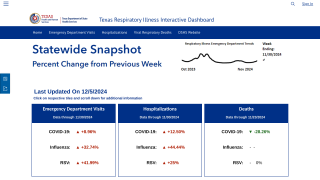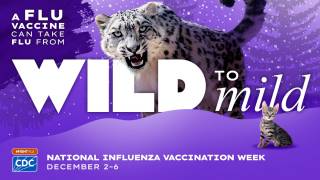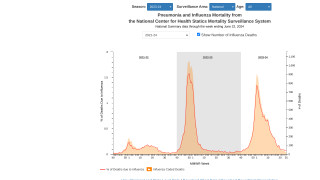Flu Shots & Antivirals Recommended For Children

The recommendations of the American Academy of Pediatrics (AAP) for the routine use of influenza vaccines and antiviral medications in the prevention and treatment of influenza in children during the 2019–2020 season have been updated.
On September 2, 2019, the AAP said in a press release that it ‘continues to recommend routine influenza immunization of all children without medical contraindications, starting at 6 months of age.’
‘Any licensed, recommended, age-appropriate vaccine available can be administered, without preference of one product or formulation over another.’
‘Antiviral treatment of influenza with any licensed, recommended, age-appropriate influenza antiviral medication continues to be recommended for children with suspected or confirmed influenza, particularly those who are hospitalized, have severe or progressive disease or have underlying conditions that increase their risk of complications of influenza.’
The following AAP updates for the 2019–2020 influenza season are as follows:
1. Both inactivated influenza vaccine (IIV) and live attenuated influenza vaccine (LAIV) are options for influenza vaccination in children, with no preference from the AAP.
2. The A(H1N1)pdm09 and A(H3N2) components of the flu vaccine are new for this season. The B strains are unchanged from the previous season.
3. All pediatric influenza vaccines will be quadrivalent vaccines. No trivalent vaccines are expected to be available for children this season.
4. The age indication for some pediatric vaccines has been expanded; therefore, there are now 4 egg-based quadrivalent inactivated influenza vaccines (IIV4s) licensed by the US Food and Drug Administration (FDA) for administration to children 6 months and older, 1 inactivated cell-based quadrivalent inactivated influenza vaccine (cIIV4) for children 4 years and older, and 1 quadrivalent live attenuated influenza vaccine (LAIV4) for children 2 years and older.
5. New formulations of licensed influenza vaccines with a volume of 0.5 mL per dose have been approved for children 6 through 36 months of age. Children 6 through 35 months of age may now receive either the 0.25- or 0.5-mL dose, with no preference, and children ≥36 months of age (3 years and older) continue to receive a 0.5-mL dose.
6. Children 6 months through 8 years of age who are receiving influenza vaccine for the first time or who have received only 1 dose before July 1, 2019, should receive 2 doses of influenza vaccine ideally by the end of October, and vaccines should be offered as soon as they become available.
7. Children needing only 1 dose of influenza vaccine, regardless of age, should also receive vaccination ideally by the end of October.
8. A new antiviral medication has been licensed for the treatment of influenza in children. The AAP noted that baloxavir (Xofluza) is now FDA-approved for children, offering a 3rd antiviral drug option for this age group in addition to oseltamivir (Tamiflu) and zanamivir (Relenza).
The AAP says ‘children often have the highest attack rates of influenza in the community during seasonal influenza epidemics. And they play a pivotal role in the transmission of influenza virus infection to household and other close contacts and can experience morbidity, including severe or fatal complications from influenza infection.
In conclusion, the AAP says ‘routine influenza vaccination and antiviral agents for the treatment and prevention of influenza are recommended for children for the 2019-2020 flu season.
"And because infants younger than 6 months still cannot receive flu vaccines, the best way to protect them is to make sure family members and caregivers receive their flu shot by October," reminds Aubren Emberton pharmacy intern for Brookshire's Grocery Company.
The Centers for Disease Control and Prevention warns that any vaccine can cause side effects, which should be reported to a healthcare provider.
Published by Precision Vaccinations
Our Trust Standards: Medical Advisory Committee

























